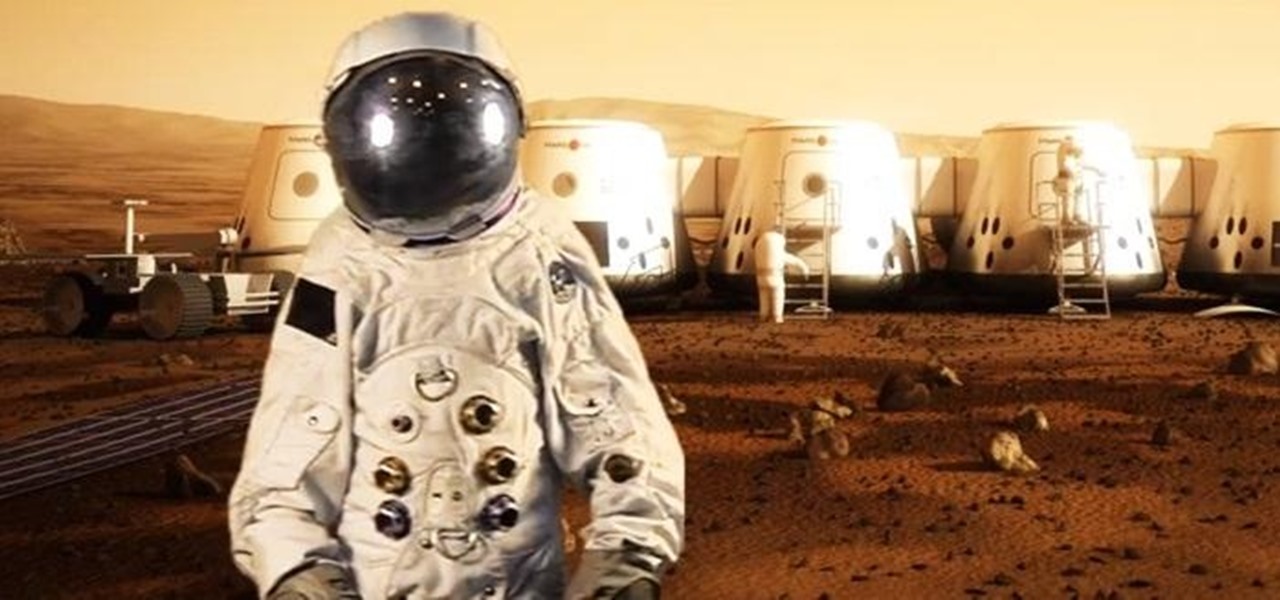Astronomy Features


News: Planning a Trip Straight Through Earth? Find Your Antipodal Destination!
Where would you end up if you dug a tunnel in your backyard straight through the Earth? If you live in the United States, you'd probably think that you'd end up somewhere in China. But despite what the hypothetical China Syndrome may have you believe, China is not the other side of the world.

News: Astronomical Observing News (3/28 to 4/3)
Grab your binoculars and telescopes, because there's a lot going on in the night skies this week. The usually dim Little Dipper will appear brighter as it moves to the right of Polaris, creating a cool effect with the Big Dipper. There's also a first-quarter moon and a really good view of Saturn. If you know of something else, share with us in the comments below!

News: Timelapse Footage of a Moonrise
This is a really quick video I took of a moonrise last year. It has been sped up by a factor of 8 and was taken using a 2600 mm equivalent lens (75 times zoom for a 35 mm lens). The mountain it is rising over is about 40 miles away.

News: 22° Halo Around the Moon
Went outside tonight to see a 22 degree halo around the moon. Took a long exposure shot of it to bring out some of the color. Jupiter is to the right and Orion is to the left.

News: Calvin & Hobbes + OS X Desktop Wallpaper
I came across these beautiful wallpapers while browsing +Guy Kawasaki's Google+ stream. Basically, someone combined Calvin and Hobbes with the OS X Lion desktop wallpaper to make some truly fun artwork. Click on the link for access to the full-resolution wallpapers.

News: Photo Highlights from the Quadrantid Meteor Shower
If you slept in during the peak of the Quadrantid meteor shower this morning, don't fret, because plenty of early risers did manage to wake up—with their cameras. Even if you did wake up and managed to withstand the cold morning air, you might not have seen anything. Cloud cover could have made it impossible, as well as bright city lights. But some stargazers made it their mission to photograph the Quadrantids, and lucky for you, they did.

News: Two Earth-Sized Planets Discovered by NASA
NASA announced yesterday that their Kepler mission has discovered the first Earth-sized planets orbiting a sun-like star outside of our solar system. Could this mean aliens? Unfortunately, no.

News: Astronomer Creates "Meteorito" Wine That's Out of This World—Literally
What happens when you combine a passion for astronomy and a love of wine? Cabernet that's out of this world. Literally. It's called Meteorito, and has a berry, nutty flavor with just a hint of iron and nickel. The wine was made by oenophile and amateur astronomer Ian Hutcheon, who runs his own vineyard and established an observatory in Chile called Centro Astronomica Tagua Tagua.

News: Astronomical Observing News (3/7 to 3/13)
AON is moving to Wednesdays! There are lots of things going on this week in the skies above, so be sure to observe. As usual, there's a lot to see around Jupiter, with its moons eclipsing and transiting. Also, a star from the Virgo constellation will be in conjunction with our Moon.

News: Astronomical Observing News (3/14 to 3/20)
This week, there's a lot going on in the skies above, with at least one event per day! There's also an equinox, which only occurs about twice a year!

News: Quadrantid Meteors and Startrails
I took about 700 pictures over 7 hours late Tuesday night and early Wednesday morning of the quandrantid meteor shower. I combined the clearest 300 of them to make the star trails, and then went and found individual pictures with the brightest meteors and overlayed them on top. I also found three planes flying overhead and overlayed those as well. The gaps in those plane streaks heading towards the horizon show how long my camera was taking between frames.

How To: Know Exactly When You Can Spot the International Space Station at Home with NASA Text Alerts
The International Space Station is one of the brightest objects in the night sky when it can be seen. If you know when and where to look, you can even see it from your house. It looks more or less like a really fast-moving plane—so fast, actually, that it's only visible from a specific place for a few minutes at a time. But now you don't have to do a ton of mathematical equations or rely solely on luck to spot the ISS at night. NASA just launched a program called Spot the Station that sends y...

News: Hey, You! Astronomy World Is Looking for Contributors! Are You Up for the Task?
Are you a big astronomy enthusiast? Do you have some amazing astrophotography pictures you'd like to share? If so, become a contributor over here at Astronomy World! We are looking for new moderators, along with contributors, to post pictures and videos, write tutorials and astronomy-related news articles, and even share updates on how your observing went!

News: Astronomical Observing News (12/21 to 12/27)
This week's AON is brief, but there's plenty to see. Without adieu, here's the news: Through March 2012—The Garradd comet shines in the sky! Here's how to observe it!

How To: Chat with NASA Astronauts Live from the International Space Station on February 22nd
Inhabiting the microgravity environment on the cusp of the world's atmosphere has to be filled with some of the most unique experiences in the world. Astronauts eat, sleep, and work just as we do, except that their lives are filled with the added dangers of extreme temperatures and possible life-threatening malfunctions, all while being 240 miles up in the sky. Well, now's your chance to ask a handful of astronauts anything you ever wanted to know about life on the International Space Station.

News: Astronomical Observing News (2/14 - 2/20)
The Garradd comet has just about reached its absolute peak! By the way, I took those pictures below of the moon through my iPhone using an adapter. Pretty cool, right?

News: Astronomical Observing News (2/29 to 3/5)
This year is a leap year, which means today is leap day! I will be explaining why this happens and some special conditions below in the AON. Plus, there is a new feature this week—elongation! Be sure to check it out below.

News: Russell Crotty's Astronomical Paper Globes
When Cerek mentioned astronomy-inspired artwork in his Astronomy World introduction post, I immediately thought of Russell Crotty. Crotty is a California artist who creates beautiful sculptures and drawings inspired by astronomy, landscape, and surfing.

News: Astronomical Observing News (1/3 to 1/10)
There are a lot of events going on this week! As I mentioned last week, there will be new features from now on. Check them out in the info section below!

News: Welcome to Astronomy World!
A little about myself and astronomy: I created this world because I love astronomy. I really, really, love astronomy. When I was ten, I went to a restaurant and saw a huge wall mural of the Andromeda Galaxy. At my house, we had a tiny refractor telescope. I knew this wasn't enough, so I bought (with help) an 8 inch Dobsonian reflector. I looked up one time to try to find something to look at and saw something fuzzy- the Orion Nebula. This is when I really got into using my telescope. I still ...

News: Total Lunar Eclipse Early Morning Tomorrow (December 10th) in North America
The next total lunar eclipse won't occur until April 2014, so if you're interested in seeing the moon engulfed in a light orange to blood red hue, set your alarm and get out there before 9:05 a.m. EST (6:05 a.m. PST, 1405 GMT). I'm planning on taking some High Definition time lapse video of the darkening and reddening that will occur.

News: Some Small Pics of the Partial Solar Eclipse
I managed to take a few snapshots of the solar eclipse in the Malibu area, where it was just a partial. Just wanted to share a few. I've still got the same setup as when I took my supermoon pics, but hopefully one day I'll be able to get something bigger than my 105mm capabilities, something like Cory's awesome solar telescope (see his time-lapse of the annular)!

News: Astronomical Observing News (2/21 to 2/27)
There's not much going on this week in the skies above, but there are a lot of conjunctions to take a peek at! And of course, there's the comet Garradd that's still showing its tail to us down here on Earth, so make sure to catch it before it's gone. The rest that's going on this week:


How To: Tired of Earth? Mars One Is Now Accepting Applications to Live Over 38 Million Miles Away
As a kid, I was always interested in what was beyond our world. I remember lying down on the top of my dad's car and watching the stars for hour, gleefully excited whenever a shooting star streaked across the night sky.

News: Earth Is Only 400 Years Old, According to Groupon
So, I got this email today from Groupon claiming today is Earth's 400 birthday. Groupon is known for their humor, but how (and why) did they pick today as Earth's 400th birthday?

News: Astronomical Observing News (4/4 to 4/10)
There isn't much going on this week, but be sure to try viewing the Spica-moon conjunction. It will be hard to view with the full moon, but it will be spectacular if you can snag a peak.

How To: SETI Needs Your Help Renaming Pluto's Newly Found P4 and P5 Moons
In 2006, everything that revolved around my world shattered into tiny pieces as I learned that scientists had decided to rescind Pluto's planetary status. Given the ol' Jeff Probst treatment, Pluto was officially voted off our solar system in the blink of an eye, leaving us with only eight planets and a whole load of useless textbooks. The primary reason that Pluto was demoted down to a "dwarf planet" was due to Pluto's largest moon, Charon, being about half the size of Pluto; all the other p...

How To: Take Mind-Blowing Space Photographs—From Outer Space
With the ever-evolving technology that imbues photography, we are never short of fantastic awe-inspiring shots. Digital cameras can capture things that the naked eye only wishes it could see, like streaking lights, rapid movements, and faraway objects, and it's fairly easy to capture these things if you know the basics.

News: Perfect Timing
Via Caras Ionut

News: Trouvelot's Amazing Celestial Illustrations from the 1800s
If you're into entomology, then you probably recognize the name E.L. Trouvelot. After all, he was the person responsible for the outbreak of invasive gypsy moths in North America, which are now one of the most destructive foliage-eating pests in the United States.

How To: Help NASA Write Code to Fix the International Space Station and You Could Win $10,000!
The International Space Station is a habitable man-made satellite currently in orbit around the Earth. Launched in 1998, the ISS is used mainly as a microgravity and space environment research laboratory where astronauts perform experiments in large variety of fields, including biology and physics. In order to be hospitable for crew members and scientists, the ISS needs energy. To do this, the station uses its solar panels to capture rays of sun and power the station up. In order to garner th...

Solar Walk: Solar System iOS App with 3D TV Support
Explore the night sky on your iOS device, or better yet, in the third dimension on a 3D TV. More information here and here.

News: New Computer Simulation Reveals How Our Milky Way Really Formed After the Big Bang
For years, astronomers have been trying to figure out how our galaxy came to be. Even with the help of high-performance computers, no model of a spiral galaxy has ever been able to recreate the Milky Way, until now. An international team of researchers has created the first successful simulation of what happened 14 billion years ago to give our galaxy its unique shape. Turns out, all they needed was a bigger bang. Photo by IntelFreePress

News: Supermoon Pics from Last Night with a Standard Zoom Lens
So, I managed to take some pics last night of the supermoon. I was dropping someone off at LAX right around perigee, so all of the images I took off the side of the road were horrible, since there were tall buildings everywhere and nothing but street and parking lot lights blocking my shots.

How To: Get Daily Astronomy Pics from NASA on Your Android, iPhone, Windows Phone, and More
There's nothing more inherently awesome than looking up into the stars and wondering WTF is really out there. Outer space is one of those rare items that a Google search cannot provide all of the answers for.

News: Photos of Mercury and the crescent Moon
Tonight, I saw Mercury for the first time. Mercury is a hard planet to see, even though it is quite bright, because it's orbit is so close to the sun. The angle Mercury makes with the Earth and the Sun is never more than about 25 degrees and most of the time it is much less. As a result, you can't ever see Mercury during the night but at a couple of times in it's orbit you can see it at either dawn or dusk. Right now, Mercury is close to it's greatest eastern elongation and can be seen low in...

How To: Watch Asteroid 2012 DA14 Zoom Past Earth Today
Earlier today, a meteorite flew over the Chelyabinsk region of Russia, triggering a shock wave that injured hundreds of people and caused damage to buildings and vehicles in the area. Witnesses describe seeing a bright ball of light streak through the sky followed by a loud boom as the 10-ton meteorite entered the Earth's atmosphere and exploded.

News: Jupiter and Venus Rising Before the Sun
Right now, Jupiter and Venus are rising in the early morning hours just before dawn. I went outside on the morning of the 4th of July and saw Jupiter and Venus right next to each other with the Pleiades (The Seven Sisters) just above them and knew that the next morning I was going to have to get up early and set up my tripod to try and capture what I saw. I used my Panasonic GH2 with the stock zoom lens set to about 40 to 50 mm equivalent and with the aperture open to about f/5. I set my ISO ...

News: Solar Scope Dialed in for the Eclipse
It's taken me several weeks to figure out the Meade Coronado SolarMax II 60 Double Stack telescope that I bought to produce a timelapse video of the solar eclipse but I'm pretty happy with the images I can produce now. Here's hoping for clear skies tomorrow!







